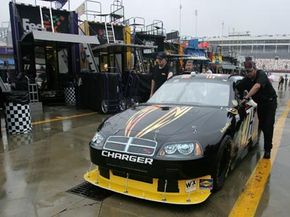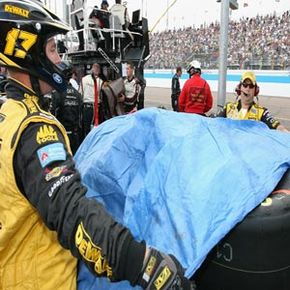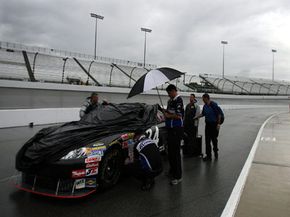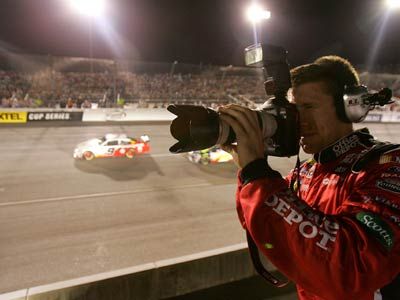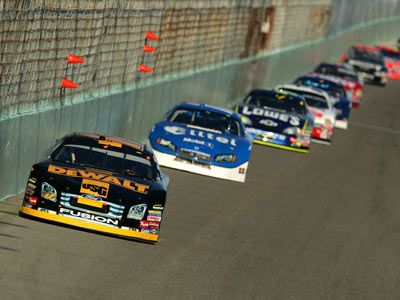Most people dislike driving in the rain, and with good reason. It's hard to see when the rain is coming down on your windshield. The wet conditions affect your stopping and turning ability. In other words, it's just not very pleasant. Consider how much worse it would be if you didn't have any windshield wipers at all, your tires had no tread on them, and you're going down the highway at about 200 miles (321.87 kilometers) per hour. It shouldn't be too hard to guess why NASCAR drivers aren't too keen on racing in the rain, either.
While it's true that other motor sports race in rainy and wet conditions, there are a few aspects of NASCAR racing that make it especially difficult to race in the rain. In this article, we'll take a look at why NASCAR doesn't race in the rain by reviewing the safety aspects of how the tires handle in the rain, what happens to the tracks in wet conditions and how a canceled race affects everyone involved.
Advertisement
Days of planning go into just one race. The track is tested and the cars are prepped for the expected race-day temperature and conditions. The drivers and crew determine how the car should handle and make adjustments to accommodate that specific track. When the rain clouds come, all of that planning goes out the window. Aside from the danger involved, bad weather conditions hurt the overall competitiveness of the sport.
To fully understand why NASCAR doesn't race in the rain, we need to learn how the tires and the tracks respond to rain. Let's first take a look at the tires and see why the typical NASCAR tire is less than ideal for rainy conditions.
Advertisement
